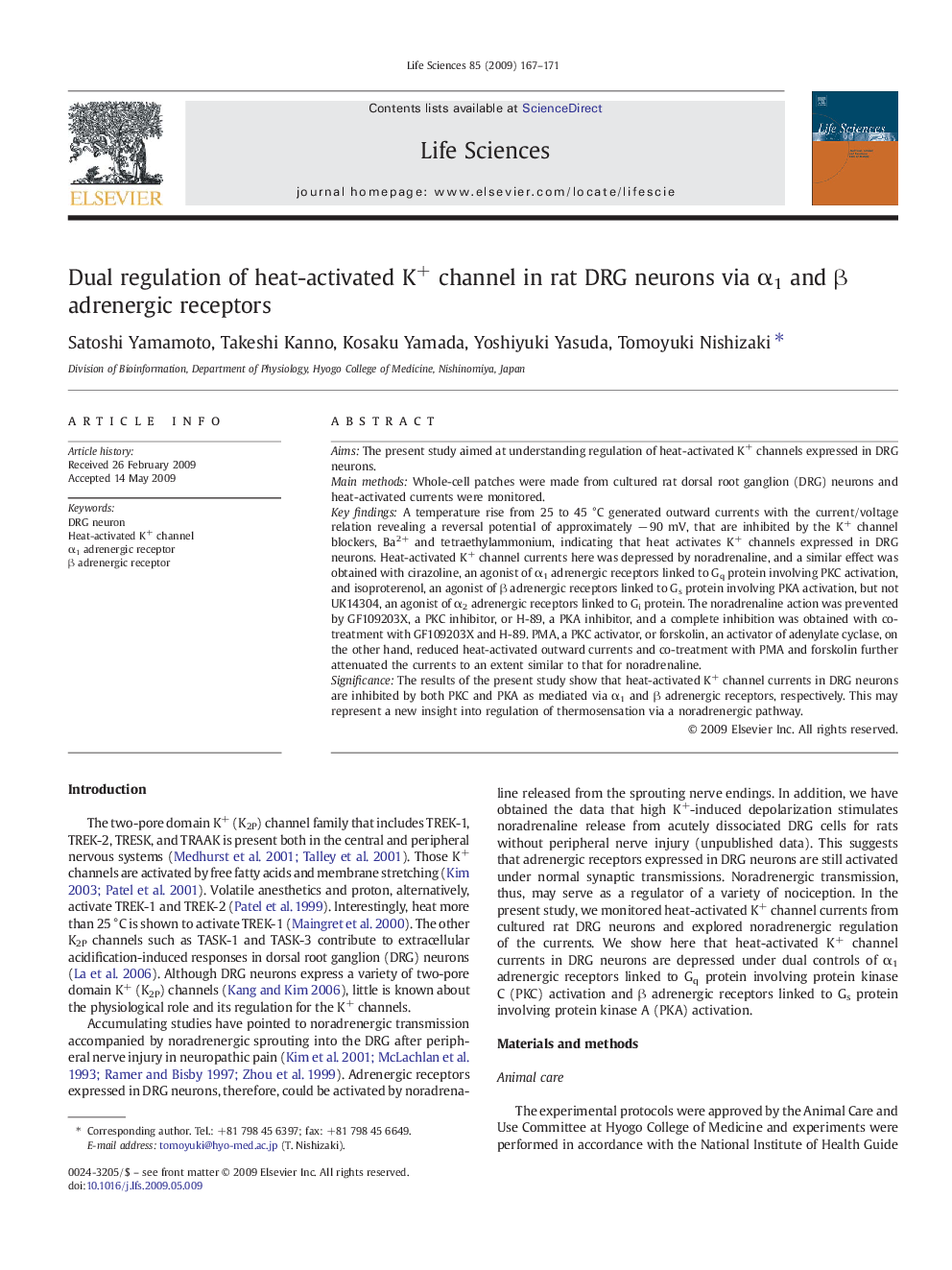| Article ID | Journal | Published Year | Pages | File Type |
|---|---|---|---|---|
| 2552751 | Life Sciences | 2009 | 5 Pages |
AimsThe present study aimed at understanding regulation of heat-activated K+ channels expressed in DRG neurons.Main methodsWhole-cell patches were made from cultured rat dorsal root ganglion (DRG) neurons and heat-activated currents were monitored.Key findingsA temperature rise from 25 to 45 °C generated outward currents with the current/voltage relation revealing a reversal potential of approximately − 90 mV, that are inhibited by the K+ channel blockers, Ba2+ and tetraethylammonium, indicating that heat activates K+ channels expressed in DRG neurons. Heat-activated K+ channel currents here was depressed by noradrenaline, and a similar effect was obtained with cirazoline, an agonist of α1 adrenergic receptors linked to Gq protein involving PKC activation, and isoproterenol, an agonist of β adrenergic receptors linked to Gs protein involving PKA activation, but not UK14304, an agonist of α2 adrenergic receptors linked to Gi protein. The noradrenaline action was prevented by GF109203X, a PKC inhibitor, or H-89, a PKA inhibitor, and a complete inhibition was obtained with co-treatment with GF109203X and H-89. PMA, a PKC activator, or forskolin, an activator of adenylate cyclase, on the other hand, reduced heat-activated outward currents and co-treatment with PMA and forskolin further attenuated the currents to an extent similar to that for noradrenaline.SignificanceThe results of the present study show that heat-activated K+ channel currents in DRG neurons are inhibited by both PKC and PKA as mediated via α1 and β adrenergic receptors, respectively. This may represent a new insight into regulation of thermosensation via a noradrenergic pathway.
